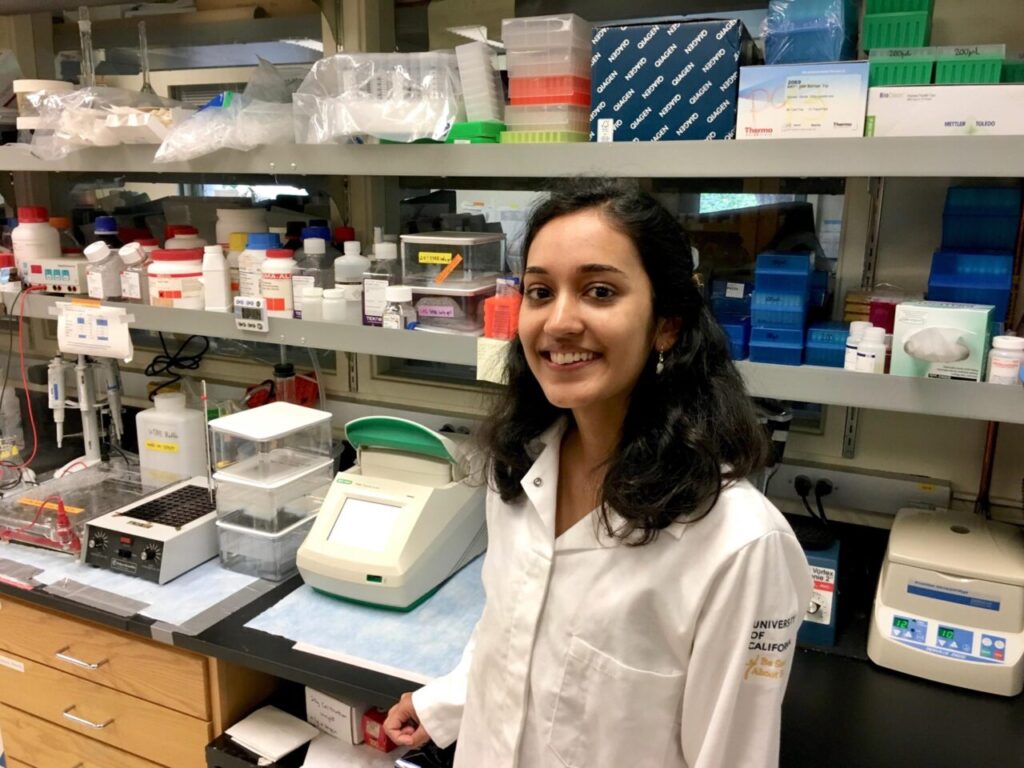Joy Li

One of the major hallmarks of cancer is the evasion of the immune system; thus, current cancer immunotherapies aim to modify the host immune system to specifically target tumor cells and repress tumor progression. Recent studies have investigated an immune pathway called the cGAS-Stimulator of IFN genes (STING) that is involved in the induction of an anti-tumor response. STING pathway activators, such as cyclic dinucleotides, (CDN) have been shown to result in stable regressions of established tumors. Currently however, researchers mostly rely on subcutaneous tumor models, which is a limited […]
Sanika Ganesh

Neuroplasticity describes how the brain learns from experience. A proposed type of plasticity, rapid homeostasis, may be necessary for stabilizing activity on a short-time scale across primary sensory-processing regions of the brain. A class of inhibitory neurons known as parvalbumin (PV) neurons are thought to implement rapid homeostatic plasticity, but the field lacks a mechanistic understanding of exactly how PV neurons may regulate plasticity. One way in which cells adapt to change is through varying protein expression. For example, recent studies suggest that neuregulins (NRGs) and tyrosine kinase receptors (ErbBs) […]
Metta Nicholson

Wetlands are habitats valued for their ecosystem services, nutrient cycling abilities, biodiversity, and buffering capacity, but have been rapidly declining since the eighteenth century. Only recent efforts have attempted to address wetland decline, and such large-scale analyses of wetland composition face complications regarding the difficulty of site access and the impacts that direct field investigations can have on vulnerable species. To address these difficulties, remote sensing tools can be used to map and analyze wetland vegetation. However, wetland biodiversity indicators from remote sensing data remain limited in strength and are […]
Andy Quaen Chen

I will investigate how histones dissociate from the nucleosome during the process of unwrapping by using “Fleezers,” optical tweezers with the added capability of detecting single molecule fluorescence. In all Eukaryotic cells, DNA is packaged and compacted in the form of chromatin in the nucleus. The nucleosome, consisting of a histone octamer core wrapped by 1.7 turns of the DNA, represents the basic, repeating, unit of chromatin. Since the DNA is constantly transcribed, repressed, repaired or replicated in response to stimuli, nucleosomes and the superstructures they form must be highly […]
Helen Kang

Information theory has been key to our understanding of the brain, by elucidating mechanisms of neural coding in the brains sensory periphery. Recent mathematical work has derived a new measure called integrated information, which can quantify how much information emerges at the level of an entire network. Integrated information has already been used to study how the structure of brain networks might underpin large-scale information flow and may help explain mechanisms of information processing in both healthy and pathological brain states. Currently, integrated information can only be calculated for neural […]
Nikko Sambold

Halogens, a group of atoms with properties not commonly encountered in nature, can introduce unique chemical properties to small molecules that can create important interactions with biomolecules. It is thus reflective that halogens are found in roughly 25% of pharmaceuticals and have been playing a larger role in the development of agrochemicals. Unfortunately, modern synthetic techniques for adding halogens onto these molecules use harsh chemicals and are not selective. This is a problem which halogenase enzymes, enzymes that can add halogens, with their ability to react in mild conditions and […]
Alma Halgren

Glutathione S-transferase Mu 1, or GSTM1, is a gene found in humans and apes that makes toxins easier to metabolize by the body. GSTM1 is extraordinary because it is one of only two genes that has been deleted independently in both humans and apes through evolutionary time, but is still present in some individuals. Over half of the world population does not carry the GSTM1 gene, yet carrying the deletion has broad physiological implications such as higher rates of certain cancers, metabolic disorders, and the early onset of severe mental […]
Natalie Petersen

According to a 2013 National Health Statics Report, 30% of American women discontinue using hormonal methods of birth control within their first year of use due to side effects. Conventional steroid-based contraception comes with a variety of side effects, such as anxiety, depression, and weight gain, and therefore creates a demand for non-hormonal contraceptive with minimal side effects. Sperm cells have a specific set of molecular targets, increasing the possibility of developing a contraceptive with high specificity and low side effects. Our preliminary data indicate that sperm motility and their […]
Elise Rio

Listeria monocytogenes is a facultative intracellular pathogen that causes disease in immunocompromised individuals and pregnant women. Its life cycle is well characterized. The pathogen enters phagocytes of the immune system, including macrophages and dendritic cells. As seen from in vitro studies using macrophages, upon entry into phagocytes L. monocytogenes escapes the vacuole and grows in the cytosol thus avoiding phagosome-mediated killing. Mutants of L. monocytogenes in which the Listeriolysin O (LLO) gene has been deleted lack the ability to escape the phagosome into the host cell cytoplasm and are avirulent, […]
Ryan Lehmkuhl

Machine learning classification is growing increasingly important for a variety of industries and applications, including medical imaging, spam detection, facial recognition, financial predictions, and more. As understanding of these systems advances, so do attacks which seek to exfiltrate information from exposed models. These models are often trained on confidential data and leakscan compromise user privacy. Additionally, users may wish to receive classifications on a modelwhile keeping their own input secret from the service provider. To address these concerns, I introduce the concept of secure prediction. Secure prediction defines a joint […]